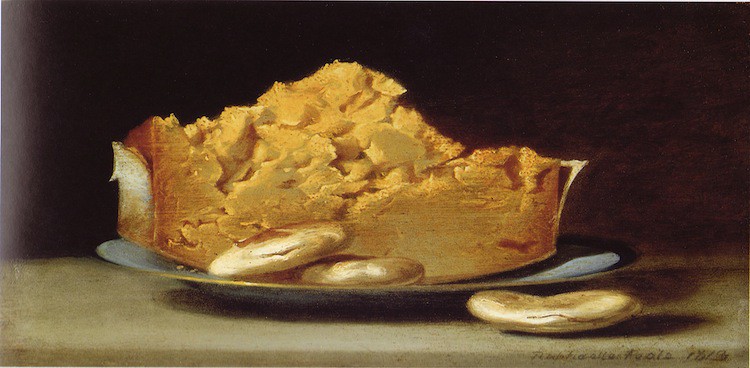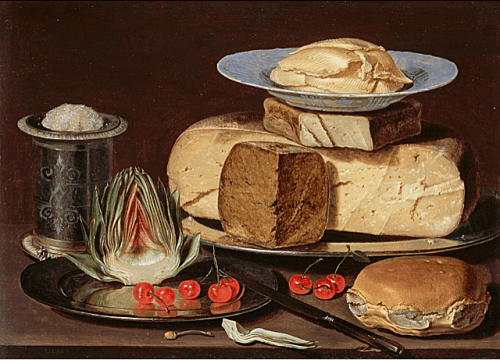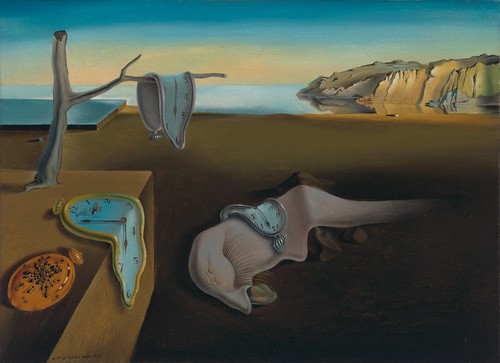
We eat with our eyes first.
A common saying among chefs, food stylists, and hungry diners alike, the idea that we visually consume food before letting our taste buds work their magic is a concept that can make or break a meal. If something looks unappetizing, we’re less inclined to give it a chance, no matter how delicious it might taste. (Admit it, there’s a picky child protesting food like lima beans and brussel sprouts in all of us.) Eateries everywhere strive for picture-perfect bites, and they’re not alone in their quest to create food that we wish would jump off the plate and into our mouths. For centuries, artists have turned to the tools of their trade in order to bring food to life through art, and artwork featuring cheese is more prevalent than you might think!

Photo Credit: feastingonart.com
Historically, still life paintings have been the primary method for artists to feature cheese motifs in their work. Europe’s Renaissance Period saw the the decline of Biblical artwork, and allowed artists more freedom to explore spirituality through other subject matter. Although the content of still life paintings might seem stagnant, artists embedded rich symbolism within each careful arrangement. In Clara Peeters’ 1625 painting Still Life with Cheeses, Artichoke, and Cherries, she used food towarn against the perils of sinful living. Here, Peeters painted cheese and butter to represent motherhood and purity, while the nearby bread and three cherries referenced the Eucharist and Holy Trinity. Divided by a knife from symbolic spirituality, the split artichoke and cherries are reflected in a mirrored plate, which represented lust and vanity, while the salt being measured on the scale called for a balanced lifestyle.
Not only did a still life give artists the opportunity to show off their talents at painting complex textures and realistic-looking subjects, it also allowed for discreet commentary on issues of the day. A common trope associated with foods like cheese, wine, shellfish, or exotic fruits reminded the viewer of the transience of luxury, and the dangers of gluttony.

Photo Credit: MoMA.org
Artists did not always use obvious representations of cheese in their work, but instead used the beauty of cheese as their muse. The most iconic example of this is Salvidor Dali’s 1931 painting Persistence of Memory, or more colloquially known as “the melting clocks painting”. Dali’s inspiration for the clocks came from an experience he once had with Camembert cheese. Having left some out after a dinner party, Dali fell asleep; when he awoke, he was surprised by both the time that had passed, and by the melted state of his lovely Camembert. Although the eccentric artist never quite explained the meaning behind his painting’s melting clocks, we do know with great certainty that cheese was at the heart of it all.

Photo Credit: whitecube.com
Cheese-inspired art is by no means limited to the canvas. Mona Hatoum’s 2002 sculptural piece, Grater Divide, took the familiar cheese grater and made it human-sized. Reflecting on her experiences as an exile at the time of Lebanon’s civil war, Hatoum used the cheese grater as a way to illustrate the change and division she felt during the very tumultuous time of her life.
The presence of cheese imagery in art clearly acts as a powerful symbol for a broad range of topics that have influenced the human condition throughout history. While there are countless examples of cheese-art in museums throughout the world, beautiful art can also be found locally and on a smaller scale. California artist Lauren Berley-Chidiac, for example, re-purposes wood to create one-of-a-kind cheeseboards, while other artists have even go so far as to carve gigantic city scenes entirely out of cheese! Humanity’s love and appreciation for cheese undoubtedly knows no bounds.
Photo Credit: Castello Cheese


